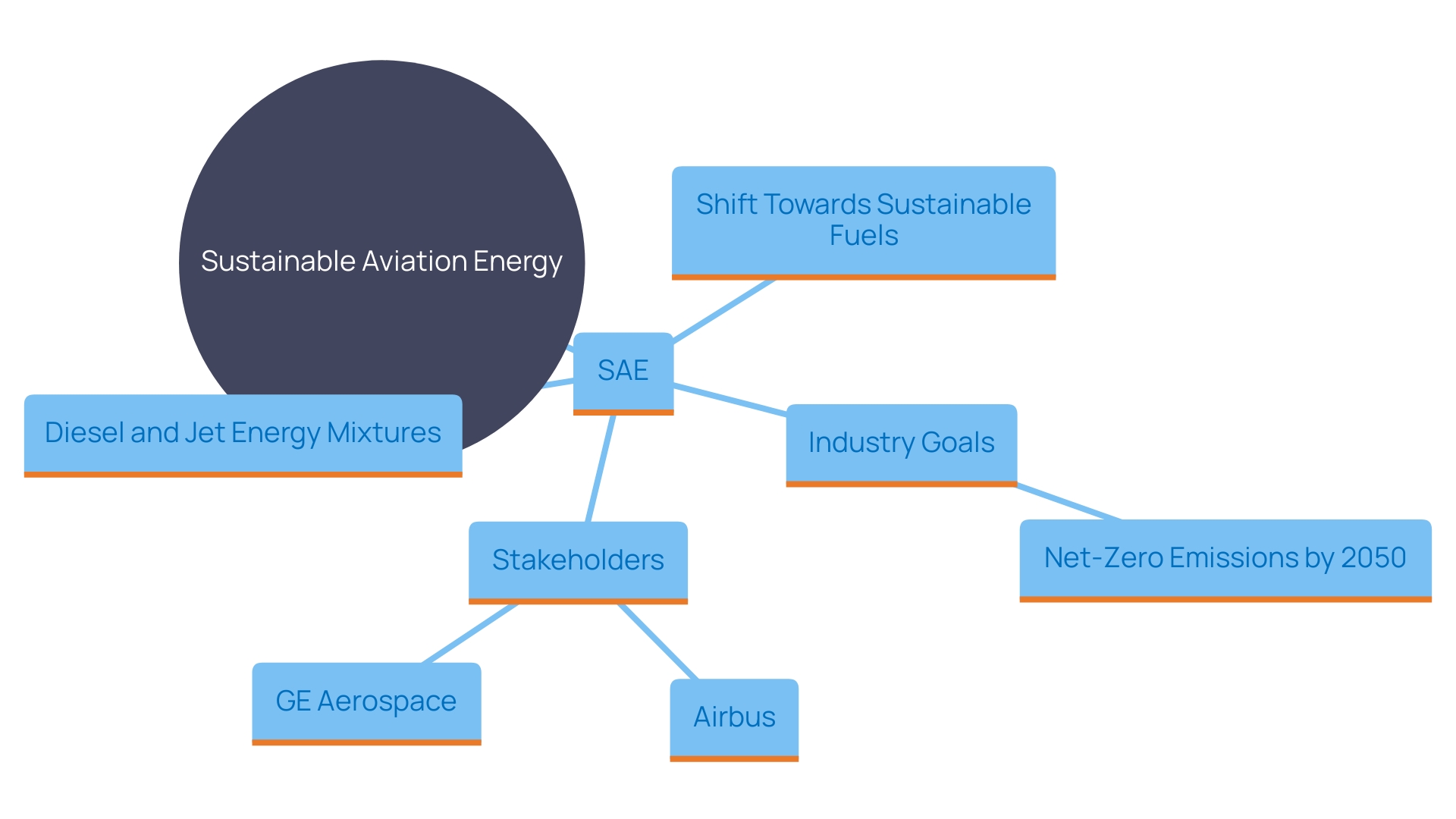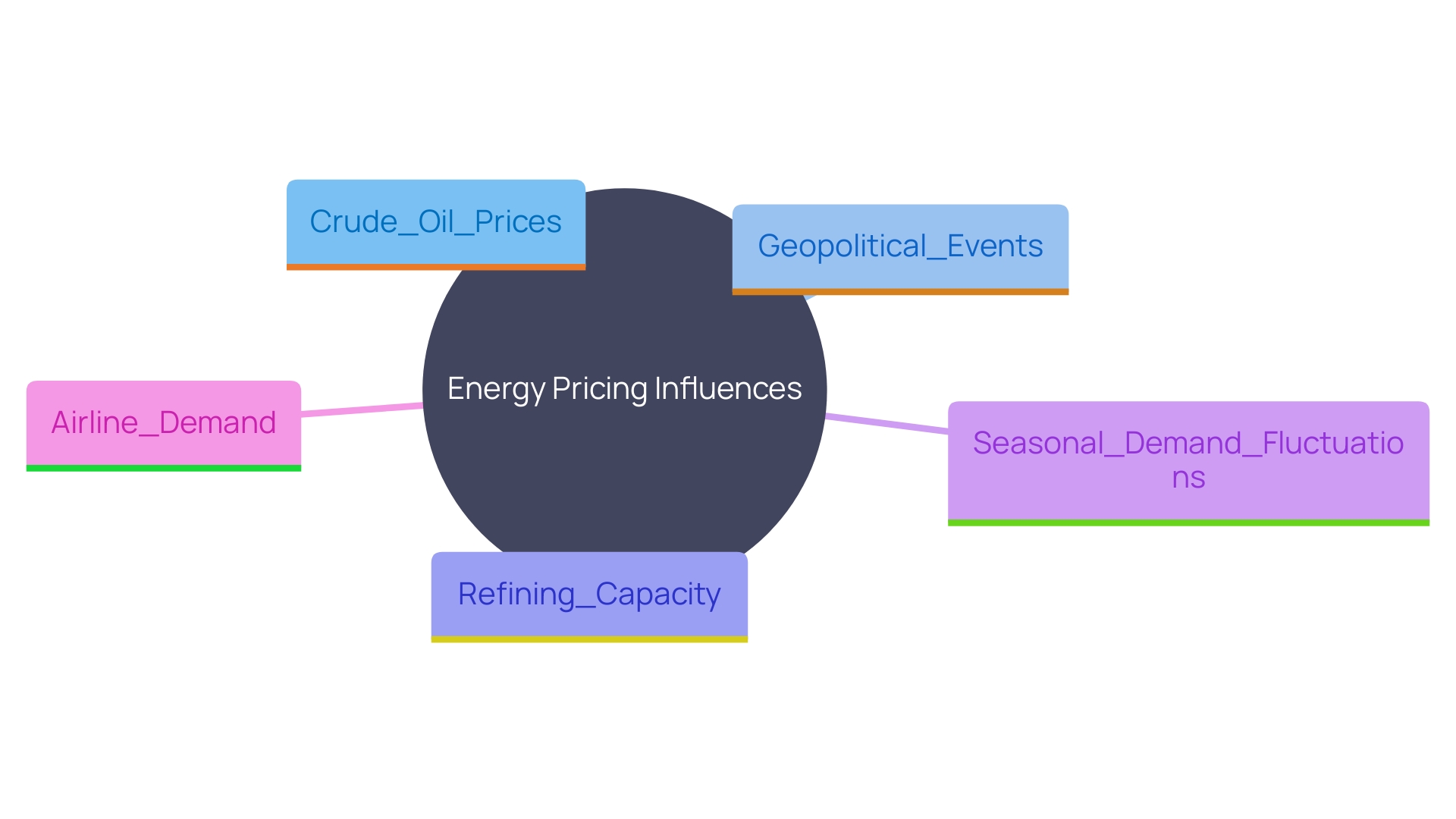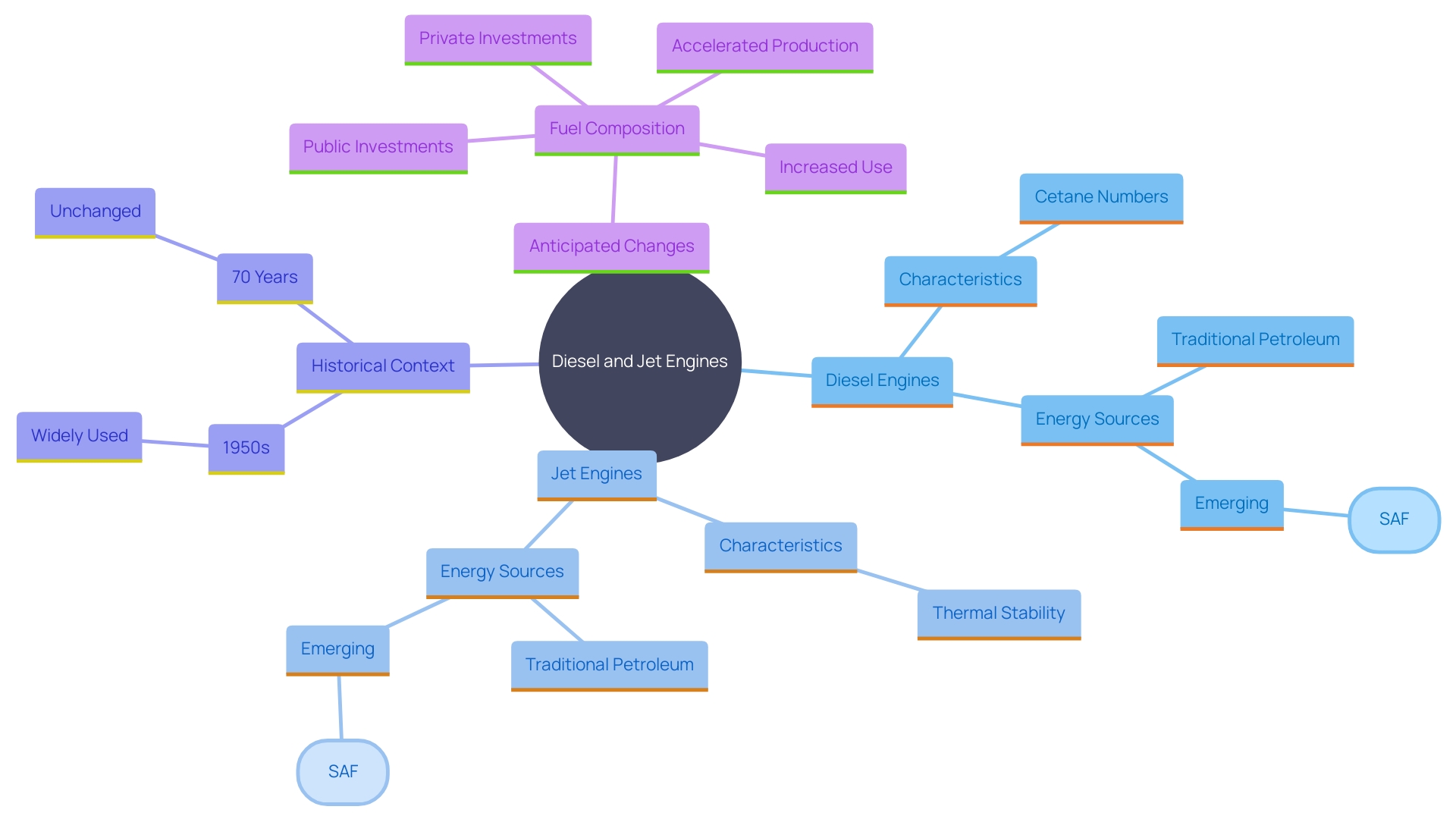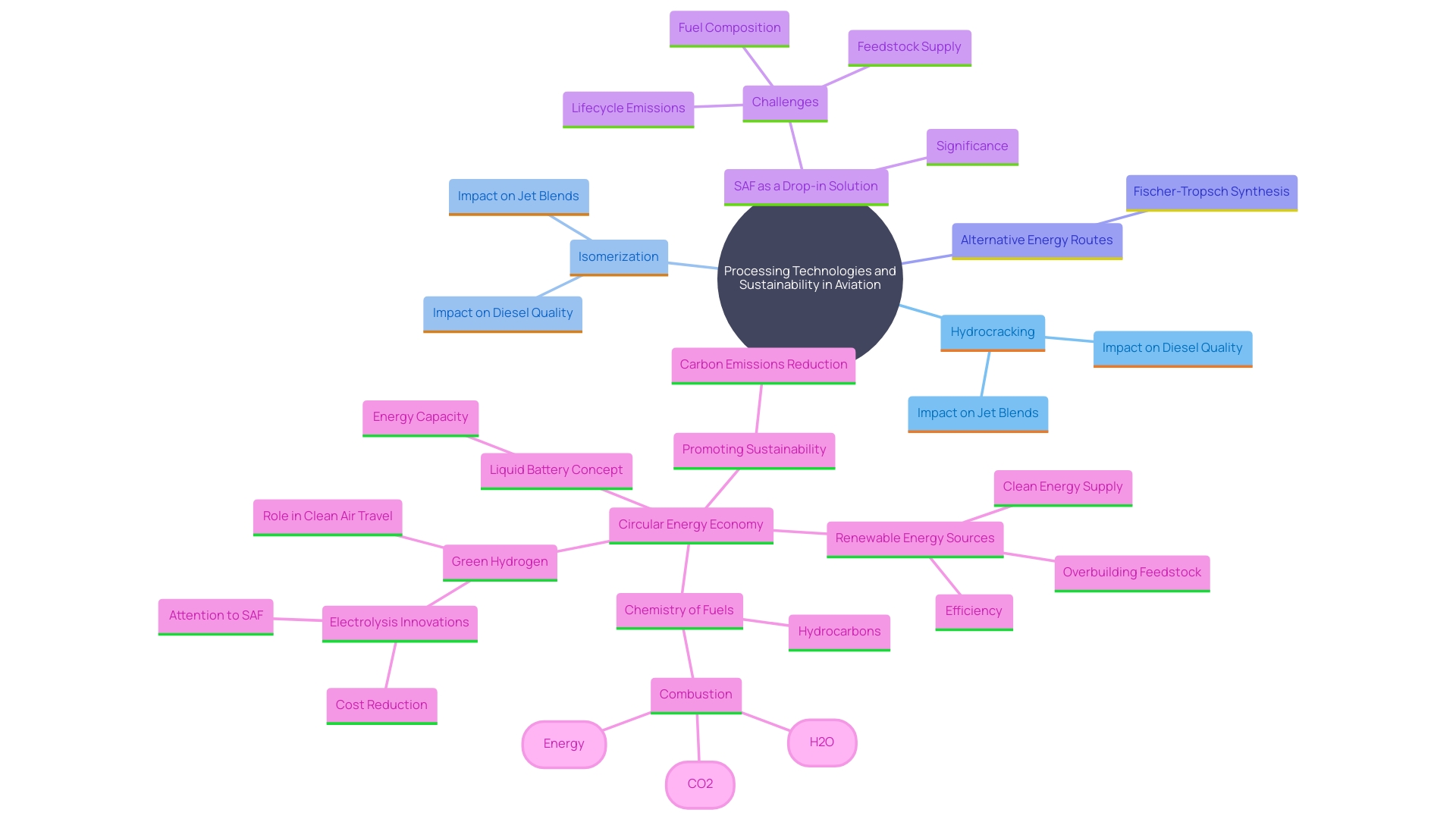Introduction
In the ever-evolving landscape of renewable fuels, understanding the intricacies of diesel and jet fuel blends is paramount for optimizing performance and minimizing emissions. These blends, derived from complex refining processes, are meticulously formulated to meet stringent regulatory standards while enhancing energy density, cold-weather performance, and combustion efficiency. With the aviation industry on the brink of a significant transition, the development and adoption of sustainable aviation fuel (SAF) are gaining momentum, promising a future where net-zero CO2 flight emissions are achievable.
This article delves into the technical aspects of diesel and jet fuel blends, the dynamics of their pricing, the compatibility with modern engine technologies, and the innovative processing technologies driving the industry forward. Through a comprehensive analysis, it aims to provide deep insights into the advancements and challenges shaping the renewable fuels sector, highlighting the collaborative efforts required to achieve a sustainable future in aviation and beyond.
Understanding Diesel and Jet Fuel Blends
Diesel and jet energy mixtures are essential in contemporary formulations, especially for enhancing performance and minimizing emissions. 'Diesel, primarily obtained from crude oil through distillation and refining, and jet propellant, such as Jet A and Jet A-1, a kerosene-type substance designed for aircraft, are mixed to improve characteristics like energy density, cold-weather performance, and combustion efficiency.'. This leads to energy sources that comply with strict regulatory requirements while accommodating different engine needs.
Public and private investments are rising to hasten the production and utilization of sustainable air transport energy (SAE), a renewable, energy-rich resource vital for the future. The sector related to air travel, which has depended on a fairly consistent energy source for 70 years, confronts a major change. 'As stated by Robert McCormick, a senior research fellow at the U.S. Department of Energy's National Renewable Energy Laboratory (NREL), "Creating a new jet propellant is an entirely novel idea for the aviation sector."
SAF must prove to be as safe and reliable as traditional fuels, compatible with existing jet engines. This shift reflects historical changes in gasoline and diesel chemistry, underscoring the sector's adaptability. Airbus aims to make all its aircraft 100% SAF-capable by 2030, working with partners to expand the global SAF market. GE Aerospace, with its century-long history of innovation in jet engines, supports this transformation, aiming for net-zero CO2 flight emissions.
These advancements align with the aviation sector's target of net-zero emissions by 2050, requiring comprehensive support from the field. The Sustainable Aviation Energy Working Group, comprising government and commercial stakeholders, convenes each year to review advancements and obstacles, guaranteeing that current data on traditional and eco-friendly energy sources is publicly available. This collaborative effort between leaders like Airbus and Emirates highlights the industry's commitment to pioneering sustainable aerospace.

Price Dynamics in Diesel and Jet Fuel Markets
The pricing of diesel and jet substances is influenced by a complex interplay of factors, including crude oil prices, geopolitical events, refining capacity, and seasonal demand fluctuations. Diesel prices are closely tied to crude oil trends but can also be affected by agricultural demand during harvest seasons and transportation costs. For instance, the U.S. Energy Information Administration forecasts that Brent crude oil prices will average $82 per barrel in 2024, maintaining a relatively stable but cautious outlook given potential OPEC+ production cuts and geopolitical tensions.
Jet energy prices, however, are significantly influenced by airline demand, travel trends, and capacity utilization. High inventories on the U.S. West Coast, for instance, reduced crack spreads for jet kerosene to an average of 5 cents per gallon in August 2024, the lowest point in the past five years. This decrease was primarily due to increased refinery production and reduced demand compared to pre-pandemic levels. Comprehending these dynamics is essential for stakeholders in the renewable energy sector to navigate market volatility effectively.

Engine Technologies and Fuel Compatibility
Contemporary diesel and jet engines are engineered to function effectively on particular types of energy sources, with differing tolerances for mixtures. Diesel engines, especially those using common rail direct injection (CRDI) technology, gain advantages from high cetane numbers and low sulfur levels in energy sources. Meanwhile, jet engines, utilizing turbojet or turbofan designs, require substances that meet specific thermal stability and freezing point specifications. The compatibility of blended substances with existing engine technologies is key to ensuring optimal performance and mitigating risks associated with quality.
Ethanol has been blended into gasoline for years. The historical timeline of liquid transportation energy sources is marked by change after change to chemistry. However, that cannot be said of petroleum jet propellant. Its properties have changed little since it first became widely used beginning in the 1950s, buoyed by a long record. But modifications are approaching for jet energy, and the flight sector is actively welcoming them. Public and private investments are increasing to enhance the production and utilization of sustainable aviation energy (SAF), an energy-dense, renewable resource regarded as essential.
Similar to modifications in gasoline and diesel composition previously, adopting SAF entails demonstrating that the substance is as safe and dependable as the traditional options—as well as being entirely compatible with current jet engines. For a sector that has developed its fleet around a resource unchanged for 70 years, that could imply a steep learning curve. "This notion of creating a new jet energy source is akin to a totally fresh concept for the aviation sector," stated Robert McCormick, a senior research fellow at the U.S. Department of Energy's (Doe's) National Renewable Energy Laboratory (NREL).

Innovations in Fuel Processing Technologies
Advancements in processing technologies have become essential for enhancing the quality and performance of diesel and jet blends. Techniques such as hydrocracking, isomerization, and incorporating additives significantly enhance the characteristics of energy sources. Moreover, creative alternative energy routes, such as Fischer-Tropsch synthesis and Hydroprocessed Esters and Fatty Acids (HEFA), facilitate the creation of sustainable air transport energy and renewable diesel. For instance, BioForming® technology enables the production of SAF that can fully substitute traditional energy sources, decreasing carbon emissions and promoting environmental objectives.
The flying sector is increasingly concentrating on SAF as it provides a drop-in solution compatible with current infrastructure and engines, making it a crucial component in lowering carbon footprints. Based on sector forecasts, SAF might substitute 10% of aviation energy by 2030, utilizing renewable waste products such as used cooking oils and animal fats. This transition from traditional energy sources to SAF aligns with regulatory commitments and the industry's net-zero aspirations.
Moreover, addressing feedstock bottlenecks is essential for increasing sustainable energy sources. Raw materials, varying from waste biofeedstocks to synthetic energy sources derived from renewable power and biogenic CO2, constitutes a considerable share of production expenses. Addressing these challenges will require large-scale renewable power installations and innovative collection methods, ensuring a robust supply chain for sustainable fuel production.
The integration of these advanced technologies and sustainable practices marks a transformative era for both the aviation and transportation sectors, driving efforts toward significant carbon footprint reduction.

Conclusion
The analysis of diesel and jet fuel blends underscores their critical importance in enhancing performance and minimizing emissions. These blends are engineered to meet regulatory standards while improving energy density and combustion efficiency. The aviation sector is undergoing a significant transition towards sustainable aviation fuel (SAF), which promises to deliver the reliability of traditional fuels alongside substantial reductions in carbon emissions.
Leaders like Airbus and GE Aerospace are spearheading efforts to ensure that future aircraft can operate on 100% SAF, targeting net-zero emissions by 2050.
Pricing for diesel and jet fuel is shaped by various factors, including crude oil prices and seasonal demand fluctuations, making it essential for stakeholders to navigate this complex landscape effectively. Recent trends show that jet fuel prices are closely linked to airline demand and refinery production levels.
Compatibility with modern engine technologies is vital for the successful adoption of SAF, and innovations in fuel processing methods, such as hydrocracking and Fischer-Tropsch synthesis, are key to producing SAF that can seamlessly replace conventional fuels. Addressing challenges related to feedstock and ensuring a robust supply chain will be crucial for scaling production and meeting sustainability goals.
In summary, the collaborative efforts among industry players, government agencies, and research institutions are instrumental in advancing the renewable fuels agenda. A unified commitment to innovation and sustainability will define the future of aviation, fostering a more environmentally responsible industry.




